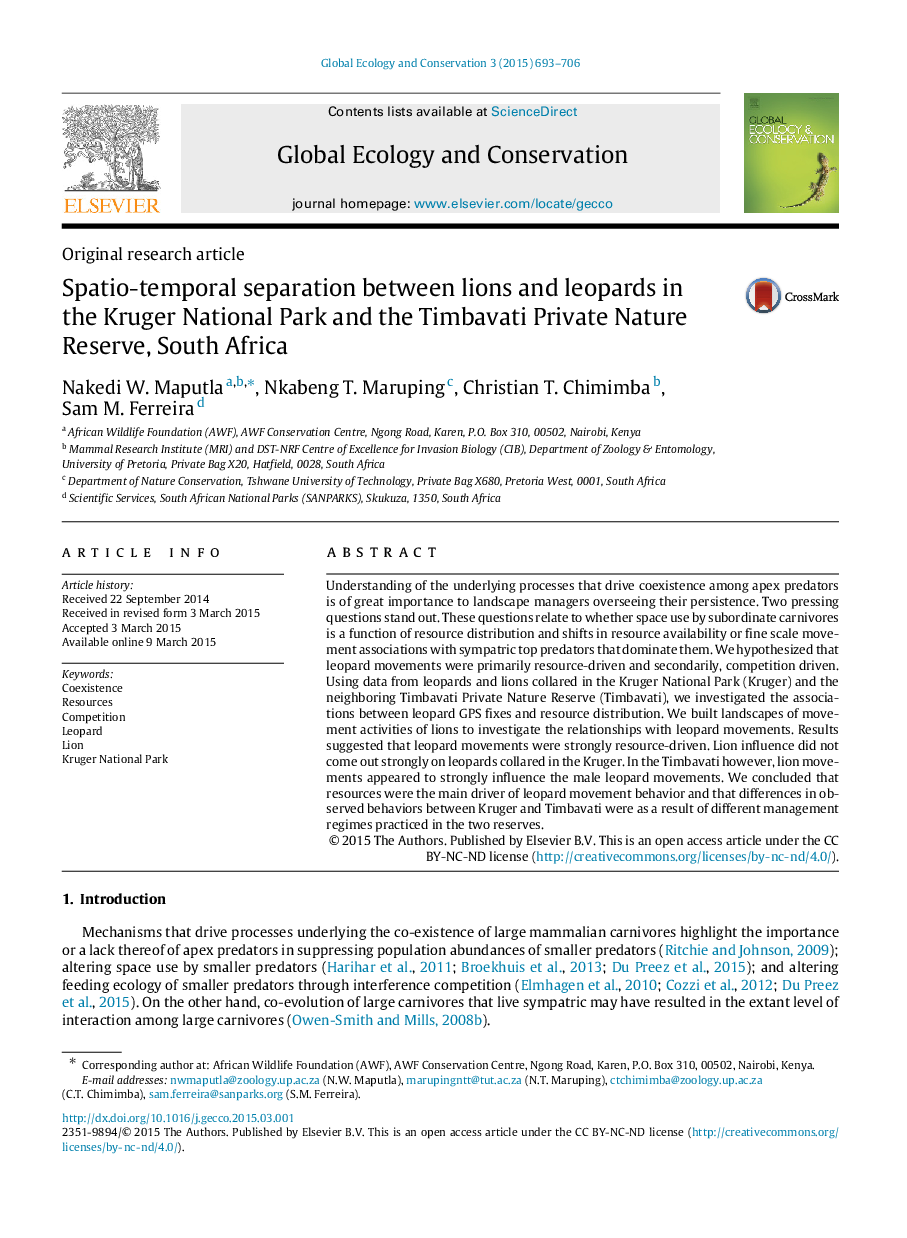| Article ID | Journal | Published Year | Pages | File Type |
|---|---|---|---|---|
| 4379597 | Global Ecology and Conservation | 2015 | 14 Pages |
Understanding of the underlying processes that drive coexistence among apex predators is of great importance to landscape managers overseeing their persistence. Two pressing questions stand out. These questions relate to whether space use by subordinate carnivores is a function of resource distribution and shifts in resource availability or fine scale movement associations with sympatric top predators that dominate them. We hypothesized that leopard movements were primarily resource-driven and secondarily, competition driven. Using data from leopards and lions collared in the Kruger National Park (Kruger) and the neighboring Timbavati Private Nature Reserve (Timbavati), we investigated the associations between leopard GPS fixes and resource distribution. We built landscapes of movement activities of lions to investigate the relationships with leopard movements. Results suggested that leopard movements were strongly resource-driven. Lion influence did not come out strongly on leopards collared in the Kruger. In the Timbavati however, lion movements appeared to strongly influence the male leopard movements. We concluded that resources were the main driver of leopard movement behavior and that differences in observed behaviors between Kruger and Timbavati were as a result of different management regimes practiced in the two reserves.
